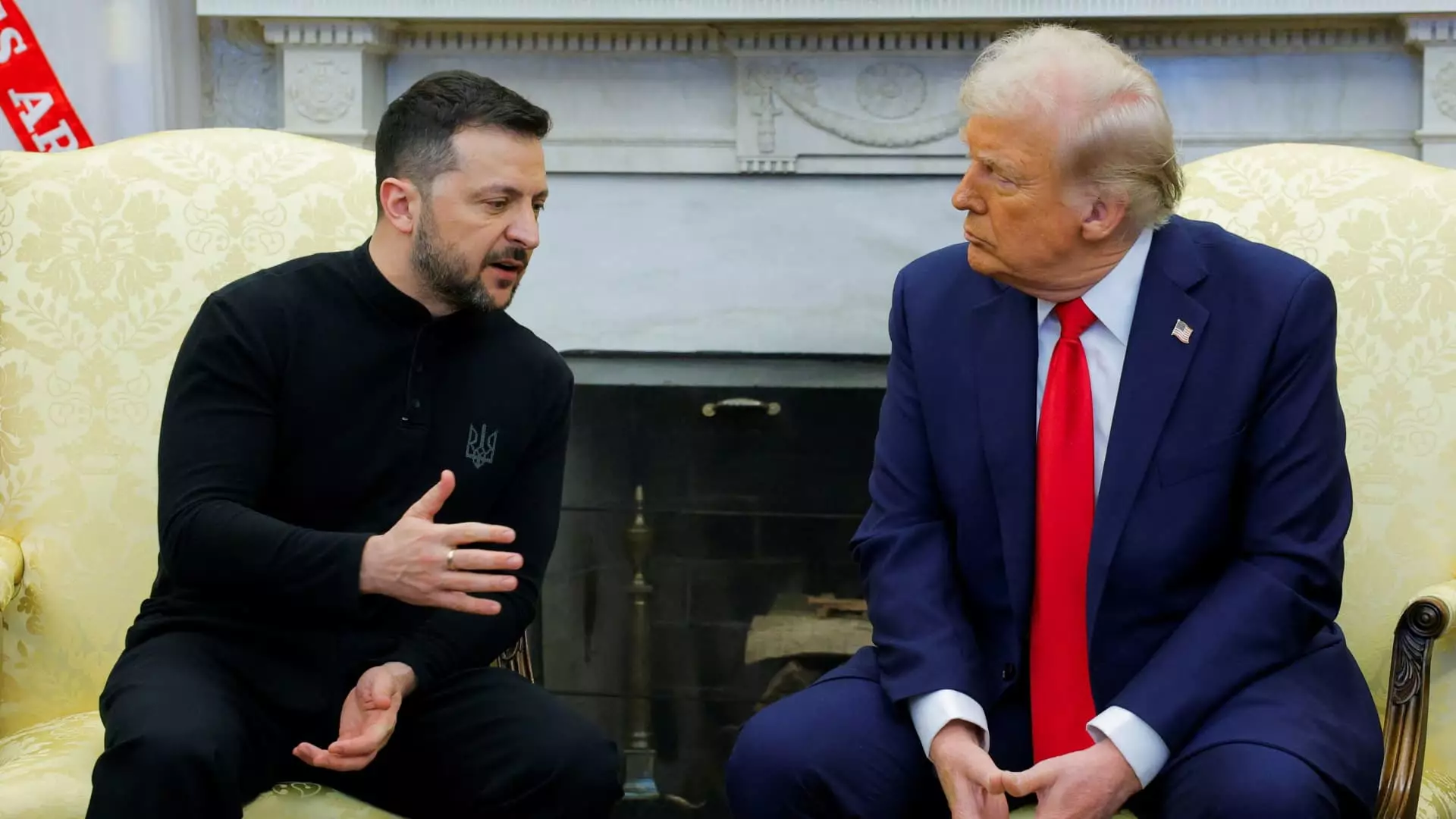In a world increasingly marred by geopolitical conflict, one event stood out—a meeting between U.S. President Donald Trump and Ukrainian President Volodymyr Zelenskyy, held in the hallowed halls of the Vatican. This encounter, set against the somber backdrop of Pope Francis’s funeral, appeared to carry a weight much greater than the sum of its parts. While the two leaders have a fraught history, the urgency of the current crisis offered a glimmer of hope amidst a landscape that feels saturated with despair.
Zelenskyy optimistically deemed the meeting “historic,” envisioning it as a turning point to revive the beleaguered attempt to broker peace in Ukraine—a country ravaged by an ongoing war with Russia. On the other hand, Trump’s administration is no stranger to sweeping declarations that often fall flat under scrutiny. This tumultuous backdrop raises the stakes of their encounter, summoning not only the eyes of the two nations involved but also the watchful gaze of an anxious world that yearns for resolution.
A Tense History
The relationship between Trump and Zelenskyy can undoubtedly be characterized as rocky. Their previous Oval Office meeting reverberated with tension, marred by accusations and misunderstandings. The provocative remarks exchanged, where Trump suggested that Zelenskyy was “gambling with World War Three,” signal a lack of trust that is detrimental to diplomacy. Zelenskyy’s criticism that Trump exists within a “disinformation bubble” reflective of pro-Moscow views adds another layer of complexity, revealing the multifaceted challenges they face as they navigate the nascent relationship.
Given their turbulent past, one might wonder about the sincerity of the current dialogue. This meeting may indeed act as a catalyst for cooperation, but the long shadow of doubt remains. Can their conflicting narratives coalesce into a unified front for peace, or will these historic aspirations evaporate into thin air, like so many past diplomatic overtures?
The Symbolism of Setting and Style
The Vatican serves as a strikingly poignant venue for this meeting, a space imbued with a legacy of peace and reconciliation. Pope Francis’s emphasis on seeking harmony, even amidst chaos, echoes loudly in the context of global tumult. However, the optics of the situation—Trump and Zelenskyy leaning in close, in a moment meant for sacred dialogue while avoiding the weight of their aides—portrays an image replete with vulnerability yet burdened by the memory of their earlier confrontation.
Zelenskyy’s attire, consisting of military-style garb rather than a formal suit, speaks volumes. It is a powerful statement of solidarity with his people and the sacrifices they endure. The stark contrast between this wartime garb and Trump’s more traditional presidential attire illustrates not only the divide in their respective contexts but also the weight of symbolism that radiates throughout their interaction. Here rests a leader who embodies resilience and a leader who embodies protocol—two worlds colliding in a single, momentous rendezvous.
The Divisive Nature of Peace Talks
Even as the leaders met with hopeful aspirations, beneath their cordial demeanor lay significant obstacles for a peace treaty. The diverging agendas are numerous, particularly regarding the controversial status of Crimea, which remains an intractable issue. The U.S. administration’s proposal to legally recognize Crimea as Russian territory met with sharp resistance from Ukraine and its European allies. This highlights not only the substantive disagreements but also the precarious dance both leaders must perform to keep their respective bases satisfied.
Trump’s call for a high-level meeting between Kyiv and Moscow sounds appealing in theory, yet it is laden with complexities that could prove insurmountable. The delicate balance of sanctions, territorial integrity, and future guarantees weighs heavily on the table. If respect for Ukraine’s sovereignty is compromised in these discussions, it may very well usher in backlash that could undermine any stability achieved through this fragile negotiation.
The Quest for Mutual Necessity
Despite their discordant history and differing priorities, both leaders find themselves in a situation where mutual dependency is critical for their respective goals. Trump needs Zelenskyy’s collaboration to lend credibility to his aspiration for rapid peacemaking, while Zelenskyy requires Trump to leverage pressure on Russia. This intersection of needs provides fertile ground for dialogue, embodying a precarious balance of power.
However, whether this reliance leads to productive outcomes or contributes further to a spiral of diplomatic failures remains to be seen. The world watches with bated breath, hoping against hope that this summit might represent not just dialogue, but a meaningful step toward lasting peace—a chance for a life free from the dread of war and a chance at rebuilding a homeland that has suffered immensely.
Ultimately, the Vatican meeting stands as a paradox: a symbol of hope draped in the shadows of skepticism. The global community holds its breath, ready to embrace the light of genuine diplomatic progress or witness yet another chapter of disappointment in the ongoing saga of international relations.

